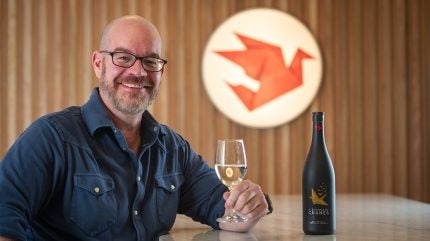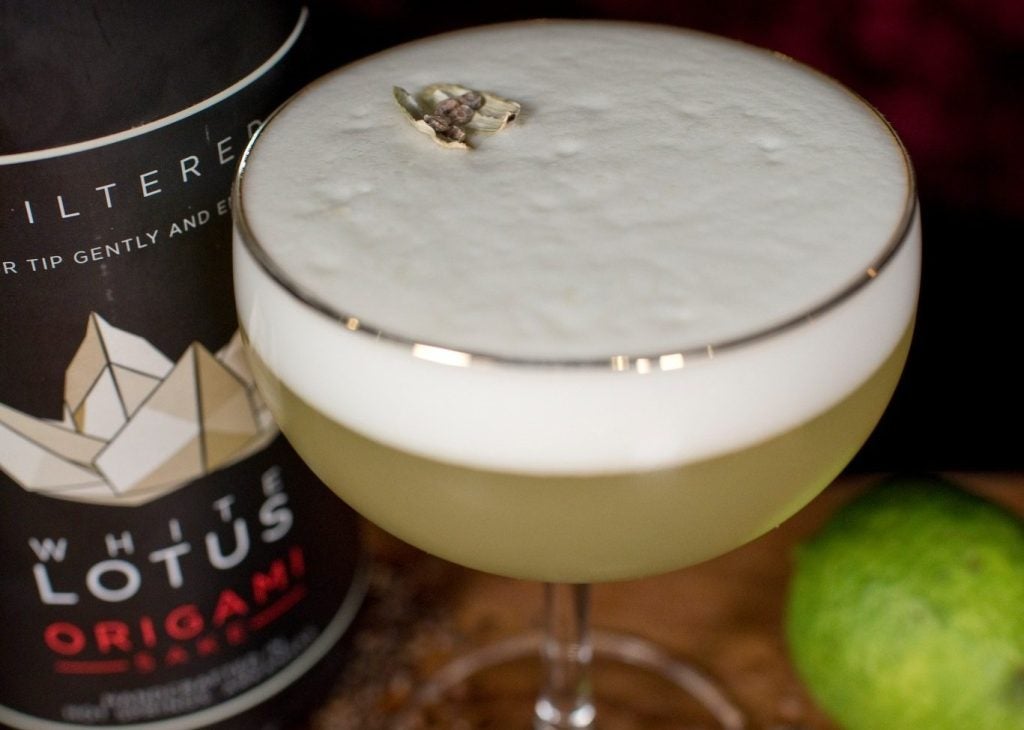
Having inked a new deal with a national distributor, US sake business Origami Sake is gearing up for an expansion drive that will see its product sold in 19 states over the next few months.
With a Japan-trained sake master now in its employ, the company is confident its premium rice wine product can appeal to the country’s wine drinkers. Andy Coyne spoke to co-founder Matt Bell.
Andy Coyne (AC): Origami Sake is a young company but you’ve just secured a deal with Republic National Distributing Company (RNDC), a major US alcohol distributor. What will this mean for the business?
Matt Bell (MB): It allows us to get the product out to the market. We have always had the capacity to manufacture nationally but it’s hard to scale from the start as it takes time to build retail relationships. RNDC is one of the largest distribution platforms with a lot of coverage throughout the US. We started the business with just one state [for distribution], our home state of Arkansas which is the 45th largest for sake sales. We never intended to have a business just for one regional area. The largest markets are California, New York, Florida and Texas and we are excited about that opportunity. We are already in 13 states and next year we hope to be in 30. That would cover about 90% of sake sales in the US.
AC: Was the RNDC deal difficult to secure?
MB: It’s a challenging process for anyone in beverage to grow distribution alignments. What we liked about RNDC was the math. Premium sake is a product that’s growing fast and they recognised the potential for moving into more premium sake sales.
AC: A lot of people may rise their eyebrows at a sake business being based in Hot Springs, Arkansas. Where did the idea for the business originate?
MB: In 2016 [co-founder] Ben Bell, who is no relation, returned from Japan. He is one of the most educated people in sake in the US. He told me about his passion for brewing sake. He had been working in this area for some time. I’ve always been an entrepreneur. I had several companies, three of which I exited but the timing wasn’t right. Fast forward to 2021. I had an opportunity to sell my interest in my company and this [sake production] was a story I kept coming back to. I thought we could create something important and lasting.
AC: How did you go about it? Did you seek out investors?
MB: I think our biggest challenge was that no one had done it. I was fortunate enough to be able to fund it and we didn’t seek outside investment which would have been a problem at the time. In fact, we still haven’t received any outside investment.
AC: What were the challenges is setting up the business?
MB: In 2021 we were coming out of Covid. We didn’t lunch commercially until last year. We were building out the facility. The challenge was there was not much expertise in the US in terms of producing sake. We had to find those experts. We have brought new people in including Justin Potts, who is essentially head brewer. He had spent a long time in Japan and is an accredited sake master who worked in the industry for the better part of a decade in Japan.

AC: Origami talks about “combining Delta-grown sake rice, Hot Springs’ water and carbon-neutral production to make outstanding sake”. You also talk about your home state becoming the “Napa Valley of sake”. Does Arkansas have advantages over other US states in terms of sake production?
MB: Arkansas is the rice capital of the US. Our home state accounts for more than 50% of the nation’s total rice production. The water quality, the combination of soil, terrain and climate allows us to grow the rice varieties used for sake, such as Omachi, Somai, and Yamada Nishiki.
AC: Presumably US-produced sake remains a niche proposition?
MB: There are a handful of premium products. Some 50% of all sake consumed here comes from domestic producers which are Japanese owned. Mass-produced sake has been in steady decline for years but premiumisation is on the rise. Sake is still relatively undiscovered [in the US].
We think the big opportunity is converting wine drinkers to this category
AC: Origami won the Platinum People’s Choice Award from the Sake Brewers Association of North America but what is your target market. Are you targeting whiskey and Bourbon drinkers with your products?
MB: No. We ‘re not aiming it at whiskey or Bourbon drinkers especially, even though it is associated with distilled beverage. It’s probably more wine drinkers as it can be served chilled in a wine glass. We think the big opportunity is converting wine drinkers to this category and getting the message across that it’s not just for drinking with Asian cuisine. Our packaging reflects that it’s a wine-like category.
AC: What is your price point?
MB: Our range is $20 to $25 for flagship products. We have some efficiencies of scale to allow us to get to that price point.
AC: I know it’s early days but can you give us an idea of your growth rate?
MB: Origami is projected to sell over 50,000 nine-litre cases in 2025, That’s 20 times growth since last year.
AC: Above and beyond expanding distribution in the US, what are your ambitions for the business?
MB: We have ambitions to get distribution outside the US. We expect to be exporting but not this year. Canada is an obvious one for us and Europe could be a big opportunity that we will look at eventually. At the moment, we need to produce enough for our current customers. Ultimately, the goal is to make Arkansas the place best known for producing sake outside of Japan and we are also looking to start a sake school at the University of Arkansas. Our mission is to not only grow our brand but to elevate the entire sake category.
AC: Is sustainability important to you?
MB: Yes. We are sourcing 100% of our ingredients locally. We are milling the rice and processing it locally and all the power is from solar.



